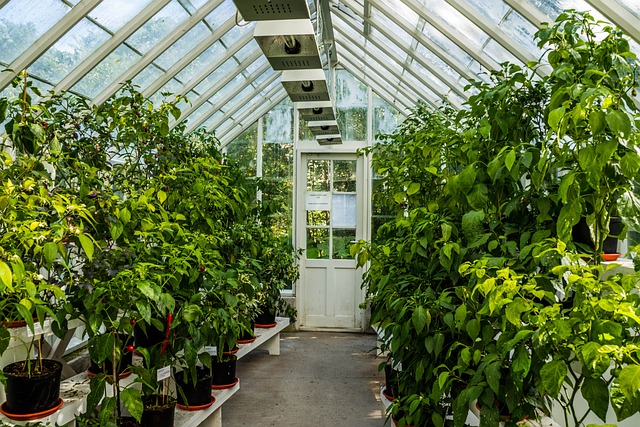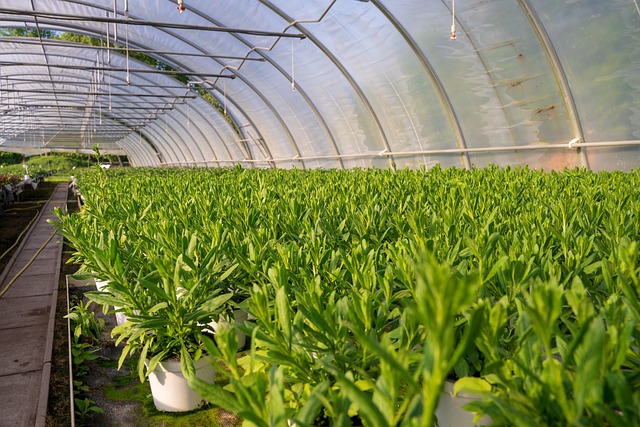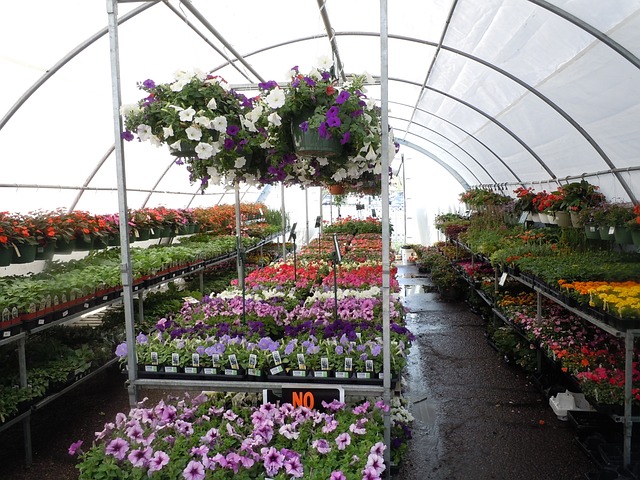As I stand in my backyard, gazing at the flourishing garden I’ve lovingly tended to for years, I can’t help but dream of expanding my horizons and taking my gardening game to the next level. The thought of owning a greenhouse has been dancing in my mind for quite some time now.
However, one question continues to nag at me: “How big of a greenhouse do I need?” It’s a pivotal question, and in my quest to find the perfect answer, I’ve embarked on a journey of research and self-discovery.
After researching, I find that it depends on goals, space, and budget. Here are the approximate sizes for common greenhouse types:
- Small Hobby Greenhouse: 6’x8′ to 10’x12′ for personal use or hobby gardening.
- Medium-Sized Greenhouse: 12’x16′ to 14’x20′ for more serious gardening or family vegetable needs.
- Commercial Greenhouse: 30’x50′ to 100’x200’+ for small commercial operations.
- Specialized Greenhouses: Vary widely based on specific needs, from very small to larger sizes.
What Are the Key Factors Influencing Greenhouse Size?

The size of your greenhouse hinges on several crucial factors, each of which plays a pivotal role in optimizing its functionality and performance.
Purpose of the Greenhouse
Types of Plants or Crops to Be Grown: Different plants have varying space requirements. For example, tall crops like tomatoes or trellised cucumbers may need taller structures, while leafy greens may require less vertical space but more horizontal space.
Furthermore, consider the growth habits, spacing, and mature size of your chosen plants to determine the greenhouse height and layout needed.
Available Space
Measuring the Available Area: Measure the exact dimensions of the space where you plan to install the greenhouse. Accurate measurements are crucial to selecting the right size.
Consider any irregularities or obstructions in the space, such as trees, buildings, or utility lines, which might affect greenhouse placement.
Sunlight Exposure: Assess the amount of sunlight the space receives throughout the day and across seasons. Sunlight is critical for plant growth, so choose a location that maximizes exposure.
However, if the available space has partial shade, you might need a larger greenhouse to compensate for reduced natural light.
Budget Considerations:
Determine your budget for the entire greenhouse project, including construction, heating,
cooling, irrigation, and ongoing maintenance costs.
Remember that larger greenhouses typically require more materials, which can significantly impact your budget.
Growing Methods
Soil-Based Beds vs. Container Gardening: Decide whether you’ll use traditional soil-based growing beds or container gardening. This choice affects the layout and space requirements of your greenhouse.
Soil-based beds may require wider spacing, while container gardening allows for more plants in a given area.
Walkways and Workspaces:
Allocate enough space for walkways between rows of plants and workspaces for tasks like planting, pruning, and harvesting. Adequate workspace is essential for comfortable and efficient gardening.
Ventilation and Cooling Needs:
Consider your local climate. In hot and humid climates, you’ll need more extensive ventilation and cooling systems, which might require a larger greenhouse to accommodate the equipment.
Future Expansion Plans:
However, if you foresee the need for expansion in the future, plan for it in the initial design. Ensure that the greenhouse layout allows for seamless expansion without major disruptions.
Local Climate Considerations:
Your local climate, including temperature fluctuations, frost dates, and wind patterns, should influence the size and design of your greenhouse.
In colder regions, a larger greenhouse may be necessary to extend the growing season and protect plants from frost.
Regulations and Permits:
Check local building codes and regulations that may dictate the maximum size of a greenhouse you can construct without special permits or restrictions. Moreover, ensure compliance with zoning laws and environmental regulations.
Aesthetic Preferences:
Consider how the greenhouse’s appearance fits into your overall landscape design. Some may prefer a smaller, more discrete structure, while others may opt for a larger, more prominent greenhouse as a focal point.
How to Determine the Appropriate Greenhouse Size?
Selecting the right greenhouse size involves a careful assessment of your gardening objectives, climate conditions, available space, and budget, ensuring a harmonious fit for your needs.
Discuss the Trade-offs Between Size, Cost, and Functionality:
Size: A larger greenhouse provides more growing space and versatility but comes with higher construction and operational costs.
Cost: Determine your budget and be realistic about what you can afford. Keep in mind that a larger greenhouse not only costs more to build but may also require more resources for heating, cooling, and maintenance.
Functionality: Think about the practical aspects of greenhouse management. A larger greenhouse can offer more flexibility in crop selection and rotation. But it may also require more time and effort to maintain.
Consider these trade-offs carefully, and prioritize your goals. For example:
- If your primary goal is self-sufficiency and growing a variety of crops, you may lean toward a larger greenhouse.
- Furthermore, if you’re on a tight budget, you might need to compromise on size and focus on optimizing the greenhouse’s efficiency.
How to Strike a Balance Between Greenhouse Size and Needs:
Start with a clear plan that outlines your priorities and objectives. This plan should include specific details about the types of plants you want to grow, the quantities you need, and any seasonal variations in your growing needs.
Evaluate your available space and budget in light of your plan. Determine the maximum size that aligns with your constraints. Moreover, consider modular or expandable greenhouse designs that allow for future growth if needed.
In addition, optimize the layout of your greenhouse. Efficient organization, including the use of shelving, vertical space, and proper spacing between plants, can make the most of your available area.
Continuously monitor and adjust your greenhouse operation. Over time, you may discover ways to maximize productivity and reduce waste, allowing you to get the most out of your greenhouse, regardless of its size.
What Are Common Greenhouse Sizes for Various Uses?

Greenhouse sizes can vary widely depending on their intended use. Here, we explore common dimensions for different greenhouse purposes, helping you find the perfect fit for your gardening endeavors.
Small Hobby Greenhouse:
Small hobby greenhouses are typically designed for personal use or gardening enthusiasts. They are ideal for those who want to extend the growing season, cultivate plants, or simply enjoy gardening as a hobby.
Size Range:
Small hobby greenhouses can vary in size, but common dimensions include 6 feet by 8 feet (48 square feet) to 10 feet by 12 feet (120 square feet).
Insights:
- These greenhouses are suitable for growing a variety of plants, including vegetables, herbs, flowers, and some small fruit-bearing plants.
- They provide an excellent space for starting seeds, propagating cuttings, and overwintering tender plants.
- Small hobby greenhouses are relatively affordable and require less maintenance compared to larger structures.
Medium-Sized Greenhouse:
Medium-sized greenhouses are designed for more serious gardening or family needs. They offer more space and versatility compared to hobby greenhouses.
Size Range:
Medium-sized greenhouses typically range from 12 feet by 16 feet (192 square feet) to 14 feet by 20 feet (280 square feet).
Insights:
- These greenhouses provide room for a wider range of crops and offer more flexibility in layout and design.
- They are suitable for gardeners who want to grow larger quantities of vegetables, have more space for experimenting with different plant varieties, or even keep small fruit trees.
- Medium-sized greenhouses may require more attention to ventilation, heating, and cooling systems, especially in extreme weather.
Commercial Greenhouse:
Commercial greenhouses are intended for profit-oriented farming or plant production. They are typically larger and more specialized than hobby or medium-sized greenhouses.
Size Range:
Commercial greenhouses can vary significantly in size, from 30 feet by 50 feet (1,500 square feet) to 100 feet by 200 feet (20,000 square feet) or more.
Insights:
- These greenhouses are designed for high-yield crop production and can support a variety of farming enterprises, including vegetable farming, flower production, or herb cultivation.
- They often require more advanced climate control systems, automation, and irrigation to optimize production.
- Commercial greenhouses may be subject to regulations, quality standards, and market demands that influence their design and size.
FAQ’s
What size greenhouse do I need for a family of 5?
The size of the greenhouse for a family of 5 would depend on your specific gardening needs and the types of plants you plan to grow. A medium-sized greenhouse, around 12’x16′ to 14’x20′, could be suitable.
Is a 6×6 greenhouse big enough?
A 6×6 greenhouse is quite small and may be suitable for a few potted plants or for starting seedlings. However, its size is limited for larger-scale or diverse gardening needs.
What is a normal size greenhouse?
There isn’t a single “normal” size for greenhouses since it varies widely based on individual goals. Common greenhouse sizes range from small hobby structures (e.g., 6×8) to larger commercial ones (e.g., 30×50 or more).
Is a small greenhouse worth it?
A small greenhouse can be worthwhile for hobbyists, beginners, or those with limited space. It’s a cost-effective way to extend the growing season and experiment with gardening.
What is the best greenhouse for a beginner?
A small to medium-sized hobby greenhouse, such as 6×8 or 10×12, is often recommended for beginners. It’s manageable in size, cost-effective, and suitable for learning the ropes of greenhouse gardening.
Which type of greenhouse is best?
The best type of greenhouse depends on your specific needs. Common types include hoop houses, polycarbonate greenhouses, and glass greenhouses. Choose the one that aligns with your goals, budget, and climate.
What is the most common size greenhouse?
There is no one-size-fits-all answer, but medium-sized greenhouses (e.g., 12×16 to 14×20) are commonly used by home gardeners. Commercial greenhouses vary widely in size based on production goals.
What is the most efficient greenhouse?
Efficiency in a greenhouse is influenced by design, insulation, and climate control. Well-insulated greenhouses with automated climate systems tend to be more efficient in maintaining ideal growing conditions.
Does the size of a greenhouse matter?
Yes, the size of a greenhouse matters and should be chosen based on your specific gardening goals, available space, and budget. The size impacts what and how much you can grow and the efficiency of the greenhouse operation.
Final Words
In conclusion, I’ve learned that the size of a greenhouse holds immense importance in determining the success of my gardening endeavors. Whether I’m a beginner, eager to dip my toes into the world of greenhouse gardening, or a seasoned enthusiast with the goal of providing for my family, the greenhouse size I choose must align perfectly with my objectives, my budget, and the space available to me.
I’ve come to realize that there is a greenhouse size tailored for every need. From the charm of small hobby greenhouses that provide a cozy sanctuary for my personal gardening pleasures to the grandeur of commercial structures designed for profit-oriented production, there’s an option to suit every purpose.

